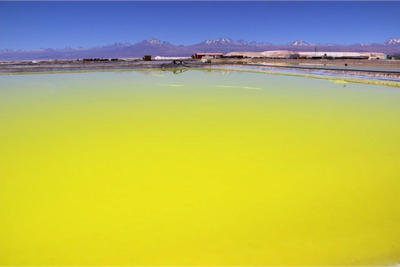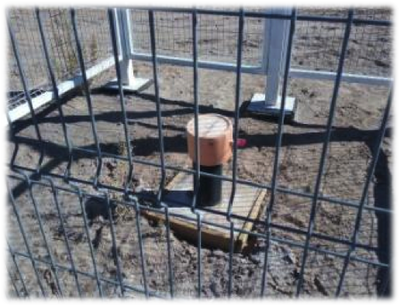False promises of green technologies
The 2019 Intergovernmental Panel on Climate Change (IPCC) report warns that there will be catastrophic and irreversible environmental consequences if we do not slash greenhouse gas emissions in half globally by 2030 and achieve net-zero emissions by 2050 [1]. In response, there is wide-spread fervor to produce and implement "green" technologies. Electric vehicles are marketed as the poster child for individual actions to reduce emissions. California alone aims to have 5 million electric vehicles on the road by 2030 and has passed over 16 bills to streamline the rollout of electric vehicles [2].
Driving an electric vehicle is more carbon-efficient than a fossil fuel vehicle, but that electricity still comes from whatever sources are used to power the local energy grid. Manufacturing an electric vehicle emits ~15% more greenhouse gases than a fossil fuel car, and most of those emissions come from the production of the battery [3,4]. None of the green-tech touted as climate change solutions work without batteries, but battery production and decommissioning are hugely problematic for the land and the people.
Driving an electric vehicle is more carbon-efficient than a fossil fuel vehicle, but that electricity still comes from whatever sources are used to power the local energy grid. Manufacturing an electric vehicle emits ~15% more greenhouse gases than a fossil fuel car, and most of those emissions come from the production of the battery [3,4]. None of the green-tech touted as climate change solutions work without batteries, but battery production and decommissioning are hugely problematic for the land and the people.
True impacts of Lithium mining
The mineral Lithium is a key component in the most batteries. The demand for lithium to produce batteries to power electric vehicles and to store energy produced by renewables is soaring - but lithium itself is a non-renewable resource that has to be mined from the land. Battery production is expected to consume 50% of global lithium by the end of 2020 - and the U.S. State Department forecasts a 1000% increase in lithium demand by 2050 [5,6]. This is a boom and bust market, designed to carry us just as far as the next technological opportunity. That's why economists call it the "white gold" rush [7].
The California gold rush was a genocide of people of coastal northern California and an environmental disaster that continues to impact regional ecosystems today [8]. The new white gold rush is poised to do the same.
75% of the world's Lithium exists in the southwestern Andean plateau in Chile, Argentina, and Bolivia. This is the world's driest non-polar desert, where it rains far less than 1 inch per year. Nevertheless, a vibrant ecosystem of people, ancient microbes, uniquely-adapted plants, fauna, and flamingos are living here - as they have for thousands of years. How will they be affected, when we purchase an electric car?
The California gold rush was a genocide of people of coastal northern California and an environmental disaster that continues to impact regional ecosystems today [8]. The new white gold rush is poised to do the same.
75% of the world's Lithium exists in the southwestern Andean plateau in Chile, Argentina, and Bolivia. This is the world's driest non-polar desert, where it rains far less than 1 inch per year. Nevertheless, a vibrant ecosystem of people, ancient microbes, uniquely-adapted plants, fauna, and flamingos are living here - as they have for thousands of years. How will they be affected, when we purchase an electric car?
Losing a precious ecosystem
In this hyper-arid region of the world, Lithium mining is groundwater mining. Tens of thousands of years ago, this area received more precipitation, and that ancient water is still stored deep underground in aquifers. As it seeped slowly through the rocks, it collected salts and minerals that are dissolved today in the briny waters. Canadian, American, Chinese and Chilean mining companies drill deep wells to pump out this water. Then, they leave it to evaporate in massive pools on the surface of the desert. The water evaporates, and is gone. The minerals remain, and the lithium is chemically separated and sent to manufacturing centers.
The green-tech market invisibilizes this supply chain - claiming that by purchasing an electric vehicle you do your part to help save the world from climate change. But no people can live without water. By the time the Lithium runs out, we will have forced thousands of people who know how to live harmoniously with the most extreme of environments to become climate refugees.
The green-tech market invisibilizes this supply chain - claiming that by purchasing an electric vehicle you do your part to help save the world from climate change. But no people can live without water. By the time the Lithium runs out, we will have forced thousands of people who know how to live harmoniously with the most extreme of environments to become climate refugees.
A better framework for change
Climate change requires more than reduced carbon emission to resolve. Extraction and oppression are root causes of climate change - and greenwashed technologies still depend upon environmentally destructive resource extraction that harm Indigenous and Black communities. If we continue to be blinded by techno-optimism, we avoid the essential, systemic transformation of how all natural resources are encountered and protected along with social change to restore balance between people, place, and environment.
References
[1] https://www.ipcc.ch/report/2019-refinement-to-the-2006-ipcc-guidelines-for-national-greenhouse-gas-inventories/
[2] https://www.cpuc.ca.gov/zev/
[3] Wilt, James. Do Androids Dream of Electric Cars. Ontario, Between the Lines, April 2020. p. 54
[4] Zeke Hausfather, “Factcheck: How Electric Vehicles Help to Tackle Climate Change,” CarbonBrief, May 13, 2019.
[5] https://www.state.gov/energy-resource-governance-initiative/
[6] Dominish, E., Florin, N. and Teske, S., 2019, Responsible Minerals Sourcing for Renewable Energy. Report prepared for Earthworks by the Institute for Sustainable Futures, University of Technology Sydney.
[7] https://www.economist.com/the-americas/2017/06/15/a-battle-for-supremacy-in-the-lithium-triangle
[8] https://www.youtube.com/watch?v=FeksO_rGepw
[1] https://www.ipcc.ch/report/2019-refinement-to-the-2006-ipcc-guidelines-for-national-greenhouse-gas-inventories/
[2] https://www.cpuc.ca.gov/zev/
[3] Wilt, James. Do Androids Dream of Electric Cars. Ontario, Between the Lines, April 2020. p. 54
[4] Zeke Hausfather, “Factcheck: How Electric Vehicles Help to Tackle Climate Change,” CarbonBrief, May 13, 2019.
[5] https://www.state.gov/energy-resource-governance-initiative/
[6] Dominish, E., Florin, N. and Teske, S., 2019, Responsible Minerals Sourcing for Renewable Energy. Report prepared for Earthworks by the Institute for Sustainable Futures, University of Technology Sydney.
[7] https://www.economist.com/the-americas/2017/06/15/a-battle-for-supremacy-in-the-lithium-triangle
[8] https://www.youtube.com/watch?v=FeksO_rGepw







